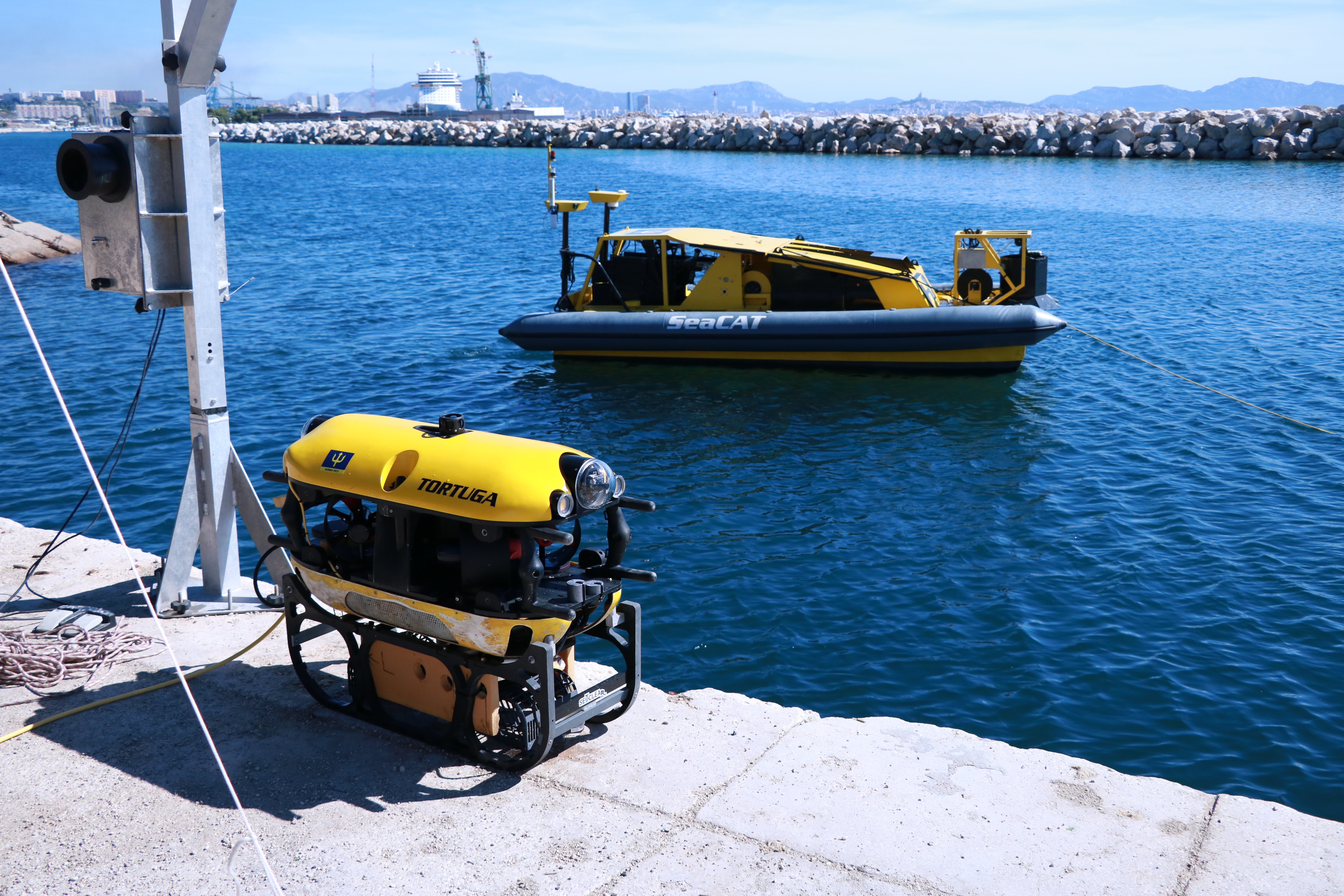Fully automated robot team successfully cleans litter from seafloor, next step is to go faster and deeper
A consortium of European researchers, led by TU Delft, created a functional team of smart robots designed to clean litter from the seafloor. The SeaClear system has successfully passed its last series of tests in both clear and murky waters. Building on SeaClear’s success, the consortium has secured 9 million euros in Horizon Europe funding and co-funding for SeaClear 2.0, to build a more robust system for surface and deep Mediterranean litter.
SeaClear was a 4-year research project funded by the Horizon Europe programme. "By the project’s end, we had a fully operational system demonstrating its functionality," says professor Bart De Schutter, project lead and working the Delft Center for Systems and Control. “The final demonstrations were successful and showcased the potential of autonomous robotics to address the pressing issue of ocean litter.”
The issue at the heart of the SeaClear project is the escalating crisis of ocean litter, a problem that poses a severe threat to marine ecosystems, wildlife, and human health. Oceans are currently burdened with an estimated 26 to 66 million tons of waste, predominantly consisting of plastic. More than 90% of this waste is not visible but rather lies at the bottom of the sea.
An integrated team
The SeaClear system is composed of several interconnected components. The base vessel acts as the central unit, deploying and managing two autonomous underwater vehicles, one for exploration and the larger for litter collection. Additionally, an aerial drone monitors and maps the sea surface, assisting in the identification of litter hotspots. These elements work in concert to create a map of the ocean floor, detect litter, and subsequently collect and remove it efficiently. In its current stage, the system can lift up to 7 kg, the gripper can fit the volume of two 2L soda bottles, and the robots collect litter in waters up to tens of meters deep. “When improved for commercial operation, the system will work with a 70% smaller cost than divers,” says De Schutter.
De Schutter and colleagues contributed by developing the litter detection and classification system that uses novel AI and computer vision methods to identify litter and type of litter (bottle, can, etc.) in the underwater video images from the exploration robot, and to distinguish between litter and fish or seaweed, which should not be harmed.
From plastic bottles to washing machines
“With proof-of-concept experiments demonstrated, SeaClear could now be used commercially,” says De Schutter. This solution could be attractive to entities such as ports, tourist sites, environmental institutions, and other civil and military institutions. In the subsequent project SeaClear 2.0, “we need to go faster, heavier, and deeper," says De Schutter. “With SeaClear , we are picking up plastic bottles, shoes and other similar waste. With SeaClear 2.0, we want to pick up tires, washing machines, and in general heavier things.”

